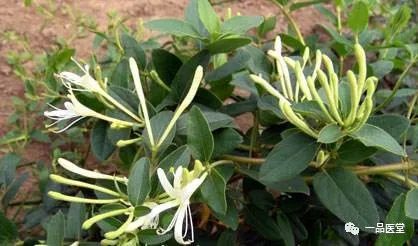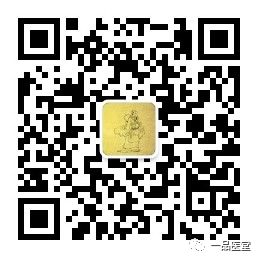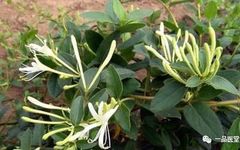
4. 脉弦 (Mài Xián) – String Pulse: 偏弦 (Piān Xián) indicates accumulation of pathogenic fluids; 双弦 (Shuāng Xián) indicates extreme deficiency-cold. Pulse Diagnosis: “支饮急弦 (Zhī Yǐn Jí Xián)” from 《辨脉法 (Biàn Mài Fǎ)》: “急弦” refers to a floating and tight string pulse, indicating a type of string pulse that is pronounced in the context of current illness. 《金匮要略·痰饮咳嗽病脉证并治 (Jīn Kuì Yào Lüè · Tán Yǐn Ké Sou Bìng Mài Zhèng Bìng Zhì)》: “脉双弦者,寒也,皆大下后善虚 (Mài Shuāng Xián Zhě, Hán Yě, Jiē Dà Xià Hòu Shàn Xū)” – A double string pulse indicates cold, and after a significant purge, it is often weak. “脉偏弦者,饮也 (Mài Piān Xián Zhě, Yǐn Yě)” – A single string pulse indicates fluid retention. Related Texts: 《金匮要略·痰饮咳嗽病脉证并治 (Jīn Kuì Yào Lüè · Tán Yǐn Ké Sou Bìng Mài Zhèng Bìng Zhì)》: “肺饮不弦,但苦喘短气 (Fèi Yǐn Bù Xián, Dàn Kǔ Chuǎn Duǎn Qì)” – Lung fluid does not present as a string pulse but manifests as shortness of breath. “咳家,其脉弦,为有水,十枣汤主之 (Ké Jiā, Qí Mài Xián, Wéi Yǒu Shuǐ, Shí Zǎo Tāng Zhǔ Zhī)” – In cases of cough, a string pulse indicates the presence of water, and the formula Shí Zǎo Tāng (Ten Jujube Decoction) is indicated. 《辨可下病脉证并治 (Biàn Kě Xià Bìng Mài Zhèng Bìng Zhì)》: “脉双弦而迟者,必心下鞕 (Mài Shuāng Xián Ér Chí Zhě, Bì Xīn Xià Gān)” – A double string pulse that is slow indicates a blockage below the heart; a large and tight pulse indicates the presence of yin within yang, which can be purged with Dà Chéng Qì Tāng (Major Order the Qi Decoction). Interpretation: The string pulse represents yin, symbolizing the liver’s influence over the spleen. The liver governs the smooth flow of qi, while the spleen is responsible for the transformation and transportation of food and fluids. If the flow is obstructed, the transformation is impaired, leading to the accumulation of pathogenic fluids. The string pulse indicates the retention of fluids, as seen in the four types of fluid diseases: phlegm fluid, suspended fluid, overflow fluid, and supporting fluid. The string pulse is indicative of the suspended fluid condition, hence the text states that “肺饮不弦,但苦喘短气” is used to differentiate based on the string pulse. The text emphasizes the importance of recognizing the string pulse in diagnosis and treatment. For example, “脉浮而细滑,伤饮,脉弦数,有寒饮,冬夏难治 (Mài Fó Ér Xì Huá, Shāng Yǐn, Mài Xián Shù, Yǒu Hán Yǐn, Dōng Xià Nán Zhì)” indicates that a floating and fine pulse suggests fluid damage, while a string pulse that is rapid indicates cold fluid, which is difficult to treat in winter and summer. A deep and string pulse indicates internal pain from suspended fluid, and the formula Shí Zǎo Tāng is indicated for this condition. Another type of string pulse is the double string pulse, as noted in 《金匮要略·痰饮咳嗽病脉证并治 (Jīn Kuì Yào Lüè · Tán Yǐn Ké Sou Bìng Mài Zhèng Bìng Zhì)》: “脉双弦者,寒也,皆大下后善虚 (Mài Shuāng Xián Zhě, Hán Yě, Jiē Dà Xià Hòu Shàn Xū)” – A double string pulse indicates cold, and after a significant purge, it is often weak. The analysis of the double string pulse should be based on the three positions of the pulse, indicating different pathologies. The double string pulse is associated with extreme deficiency-cold, indicating a blockage below the heart. The term “心下鞕 (Xīn Xià Gān)” refers to a tightness below the heart, which can be felt in the left and right positions of the pulse. The text also notes that a double tight pulse indicates cold in the upper jiao, leading to a blockage of the heart and lungs, resulting in the inability to express qi. The string pulse is also associated with the possibility of parasitic infections, as indicated in the text: “脉弦主疟 (Mài Xián Zhǔ Nüè)” – The string pulse indicates the possibility of malaria. The text states: “虐脉自弦,弦数者多热,弦迟者多寒 (Nüè Mài Zì Xián, Xián Shù Zhě Duō Rè, Xián Chí Zhě Duō Hán)” – A string pulse that is rapid indicates heat, while a slow string pulse indicates cold. The presence of a string pulse may suggest the presence of parasites. The string pulse is also indicative of deficiency, often referred to as 革脉 (Gé Mài), which is associated with deficiency syndromes. The text states: “脉弦者虚也 (Mài Xián Zhě Xū Yě)” – A string pulse indicates deficiency. The analysis of the string pulse in relation to deficiency syndromes highlights its significance in diagnosis. 《金匮要略·五脏风寒积聚病脉证并治 (Jīn Kuì Yào Lüè · Wǔ Zàng Fēng Hán Jī Jù Bìng Mài Zhèng Bìng Zhì)》: “心伤者,其人劳倦,即头面赤而下重,心中痛而自烦,发热,当脐跳,其脉弦,此为心脏伤所致也 (Xīn Shāng Zhě, Qí Rén Láo Juàn, Jí Tóu Miàn Chì Ér Xià Zhòng, Xīn Zhōng Tòng Ér Zì Fán, Fā Rè, Dāng Qí Tiào, Qí Mài Xián, Cǐ Wéi Xīn Zàng Shāng Suǒ Zhì Yě)” – In cases of heart injury, the individual may experience fatigue, facial redness, heaviness below, heart pain, and agitation, with a string pulse indicating heart damage. The text emphasizes the connection between the string pulse and deficiency syndromes.

Analysis of the Main Diseases Associated with the String Pulse in Shang Han Lun (Part 1)
Application of Ginger in Classical Formulas

